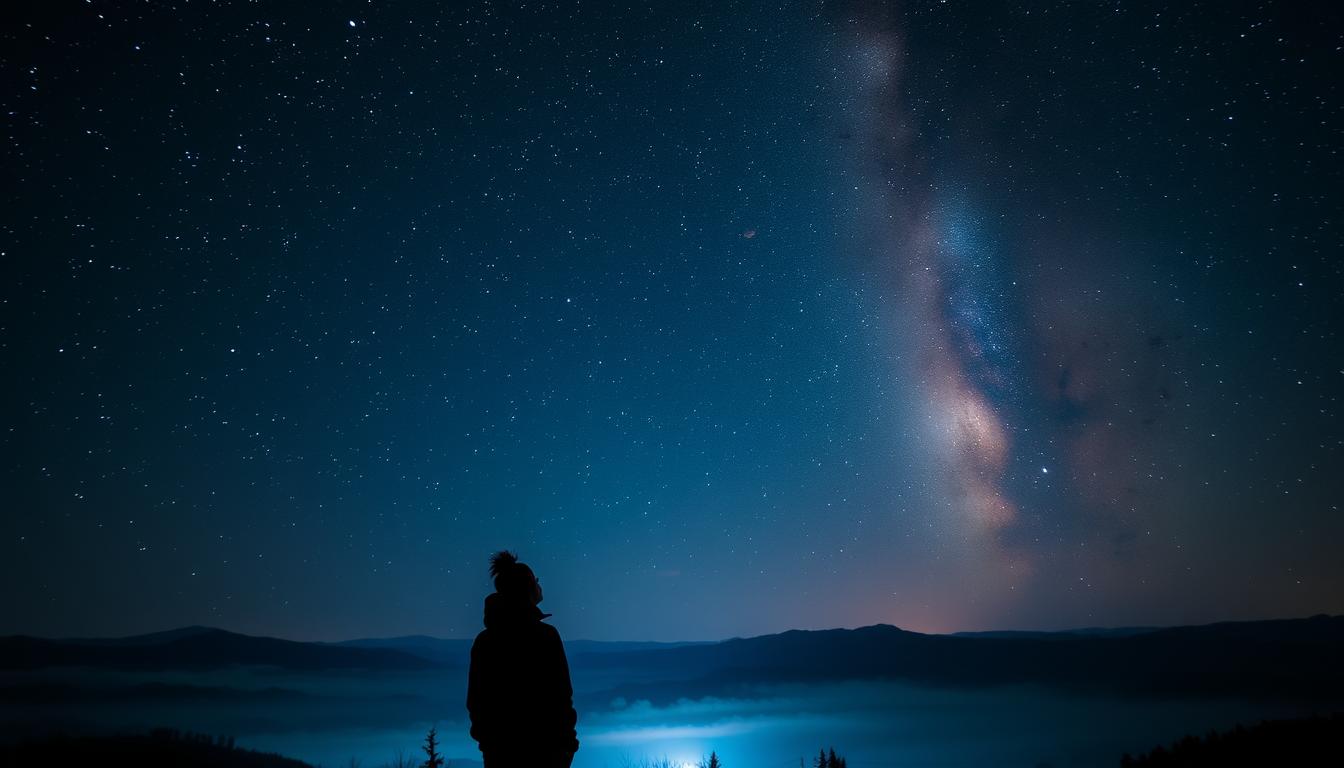What if the best travel moments happen after sunset? A growing trend proves it’s true. According to Booking.com, 62% of travelers considered night-focused trips in 2024—and Wayfairer Travel reports a 25% surge in nocturnal excursions.
Noctourism isn’t just about avoiding crowds. It’s a chance to see the world transformed. Picture the Northern Lights dancing overhead or bioluminescent waves glowing in the dark. These experiences redefine adventure.
With 2025’s solar maximum approaching, celestial events will make nighttime travel even more magical. Ready to explore after dark?
What is Noctourism?
The night holds secrets most travelers never see. Unlike traditional tourism, this trend focuses on after-dark activities—from stargazing in deserts to spotting nocturnal wildlife. Contiki defines it as travel centered on astronomical events and night-adapted adventures.
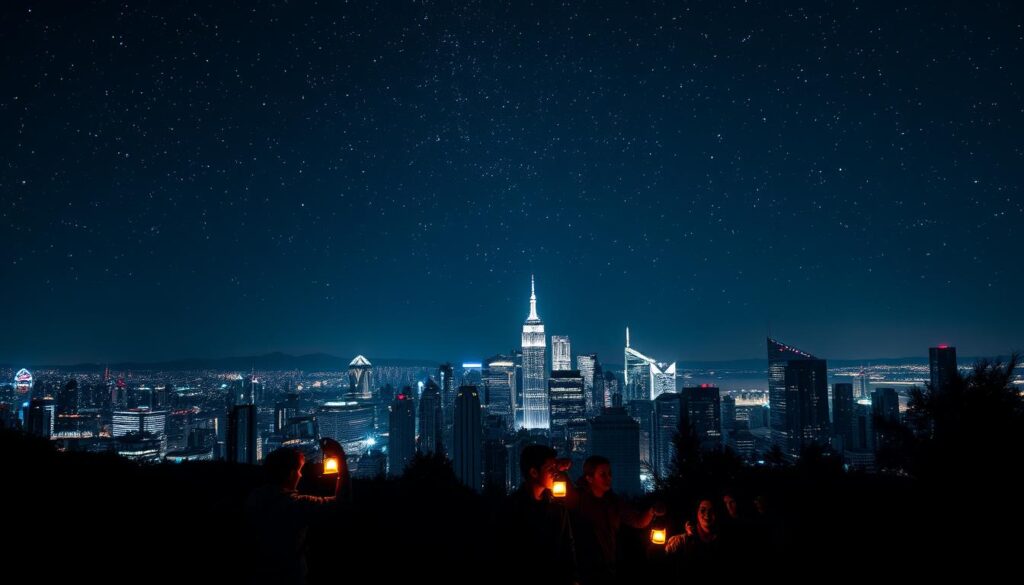
Defining the Nighttime Travel Trend
Imagine museums with midnight openings or markets lit by lanterns. These experiences replace crowded daytime tours. Flash Pack reports a 40% demand surge among millennials for non-alcoholic night events. It’s not about nightlife—it’s about transformative moments.
Why Travelers Are Choosing the Dark
Reduced light pollution means clearer views of galaxies and rare animals. Sustainable options like solar-powered lodges also attract eco-conscious visitors. Below, see how day and night tourism differ:
| Day Tourism | Noctourism |
|---|---|
| Crowded landmarks | Private celestial shows |
| High energy use | Low-impact exploration |
| Limited wildlife | Active nocturnal species |
From bioluminescent kayaking to silent discos under stars, the night offers endless possibilities. Ready to swap sunlight for starlight?
Why Noctourism is Trending in 2025
Travelers are trading daylight for cooler, quieter adventures. The year 2025 promises a surge in after-dark exploration, fueled by climate shifts and cosmic curiosity. Here’s why this trend is shining bright.
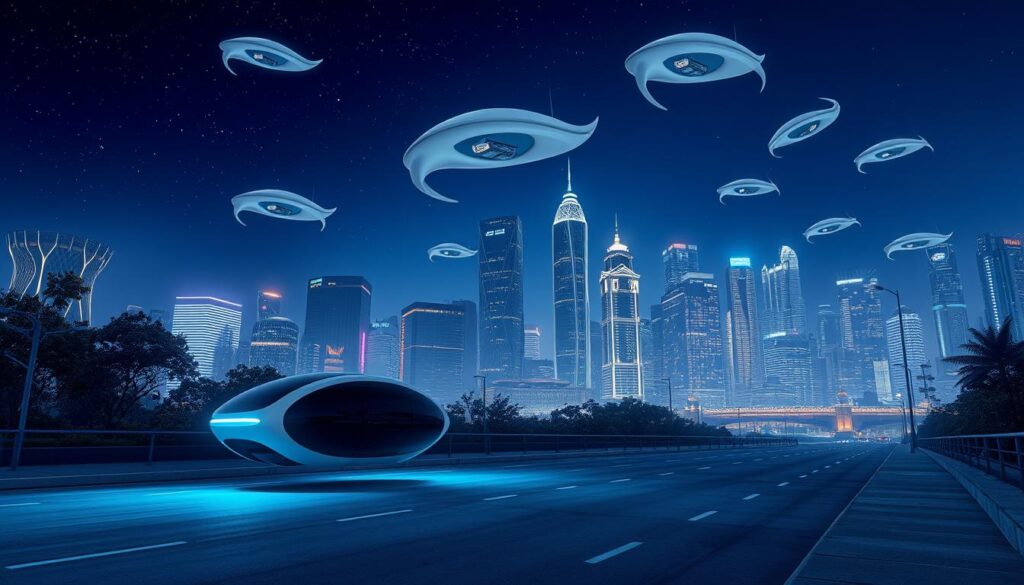
Escaping Crowds and Heat
Daytime temperatures above 35°C in places like Petra make night visits a relief. Iconic sites now offer exclusive after-hours access, like the Taj Mahal’s moonlight viewings. Tokyo reports 67% demand for nighttime activities, proving travelers prefer cooler, crowd-free experiences.
The Cosmic Connection: Space-Inspired Curiosity
With 2025’s solar maximum approaching, space tourism is booming. Hurtigruten’s astronomy cruises doubled bookings last year. Observatories from Chile to Hawaii partner with hotels, blending stargazing with luxury travel. The night sky isn’t just a view—it’s a destination.
Sustainable and Low-Impact Exploration
Nighttime activities often leave a lighter footprint. Solar-powered lodges and wildlife-friendly tours thrive after dark. Compare the impact:
| Day Tourism | Nighttime Travel |
|---|---|
| High energy use for AC/lighting | Natural cooling, minimal lighting |
| Disrupts animal habitats | Supports nocturnal ecosystems |
| Peak-hour overcrowding | Balanced visitor distribution |
From bioluminescent bays to silent desert hikes, the night offers a sustainable way to wander. Ready to embrace the dark?
Top Noctourism Activities to Try
After sunset, the world transforms into a playground of rare experiences. From celestial wonders to elusive wildlife, these adventures redefine travel. Here are three must-try after-dark activities.
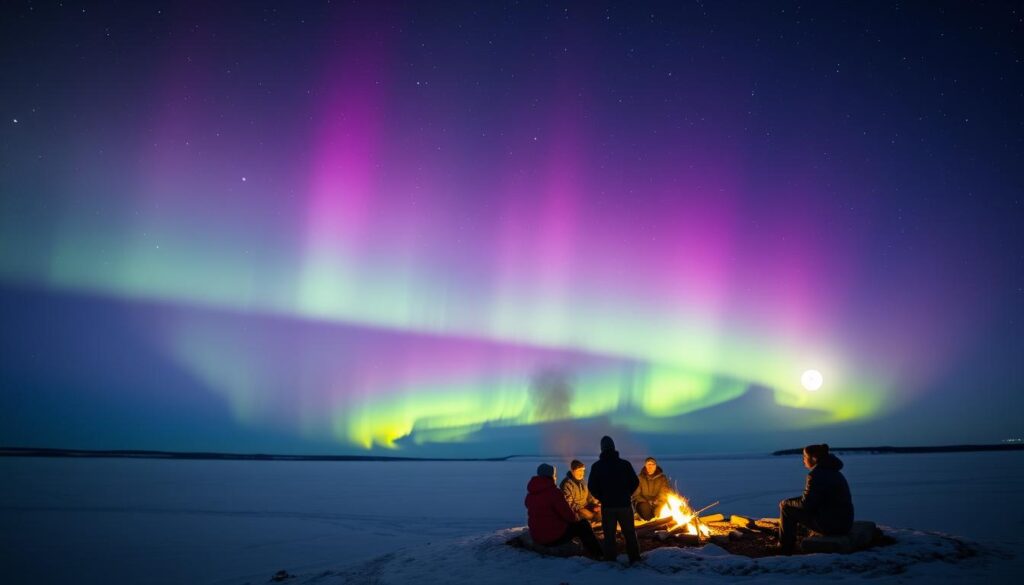
Stargazing Under Pristine Skies
Dark sky reserves offer unobstructed views of the Milky Way. Chile’s Atacama Desert and Utah’s Bryce Canyon are top picks. Pack a telescope or join guided tours to spot constellations.
Chasing the Northern Lights
Tromsø, Norway, saw 87 flights in 2024—up from 22 in 2023—proof of growing demand. Hurtigruten’s cruise guarantee offers a free trip if the aurora doesn’t appear. Pro tip: Visit between September and March for the best displays.
Night Safaris and Wildlife Spotting
Africa’s bush babies and Arctic wolf howls are stars of the dark. Wildlife Worldwide’s aardvark-focused trips in South Africa sell out fast. Compare these to Kona’s manta ray night dives, up 2% in bookings.
- Bioluminescent bays: Kayak in Puerto Rico or the Maldives where water glows blue.
- Social nights: Contiki’s Thailand Full Moon Parties blend fun with cultural immersion.
Best Stargazing Destinations Worldwide
The cosmos reveals its brilliance in places untouched by city lights. Whether you’re chasing the Milky Way or rare meteor showers, these spots offer front-row seats to the universe.
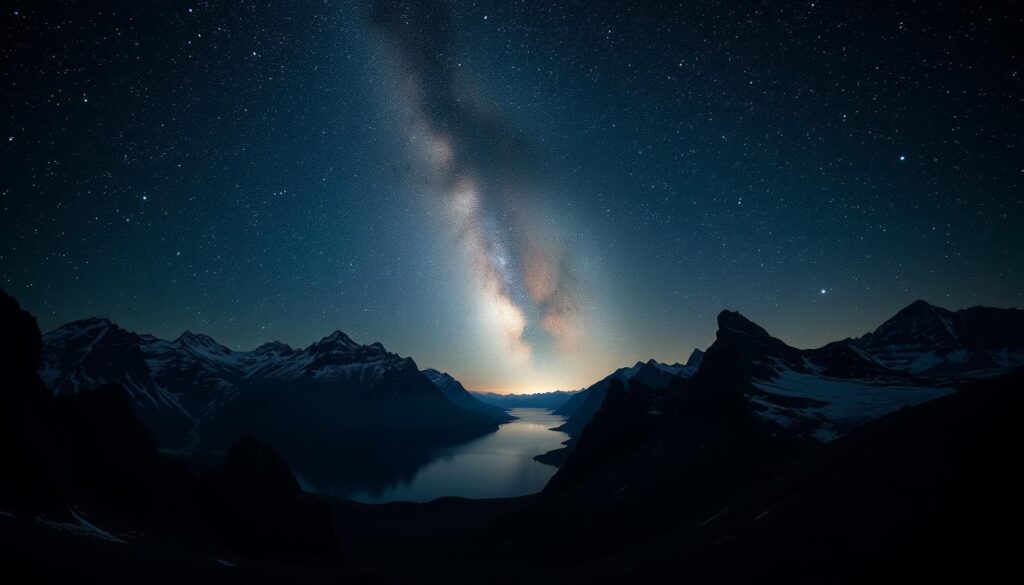
Top Dark Sky Reserves
New Zealand’s Tāhuna Glenorchy Dark Sky Sanctuary (new in 2025) blends Māori star legends with jaw-dropping views. Meanwhile, Chile’s ALMA Observatory partners with luxury resorts—imagine hot tubs under the Southern Cross.
National Parks with Celestial Views
The UK’s 22 dark sky parks include the Lake District, where moonlit swims are a local tradition. In the U.S., Bryce Canyon’s national park status protects its starry nights from light pollution.
Remote Deserts for Unmatched Clarity
Chile’s Atacama Desert boasts telescopes and astronaut training camps. Contrast that with the Sahara’s nomadic camps, where guides decode constellations without tech.
- Royal Astronomical Society picks: Namibia’s dunes, Australia’s Outback, and Norway’s Arctic skies.
- Swiss innovation: Nomady’s Million Stars Hotel suspends beds under open skies.
| Urban Sky | Dark Sky Reserve |
|---|---|
| Faint stars, orange glow | 5,000+ visible stars |
| Constant light pollution | Zero artificial light |
Pack a red flashlight (to preserve night vision) and let the universe guide you.
Northern Lights Hotspots
Few natural wonders rival the magic of dancing auroras. The northern lights transform the sky into a canvas of green, purple, and pink. With an 86% success rate in Arctic camps, 2025’s solar maximum promises even brighter displays.
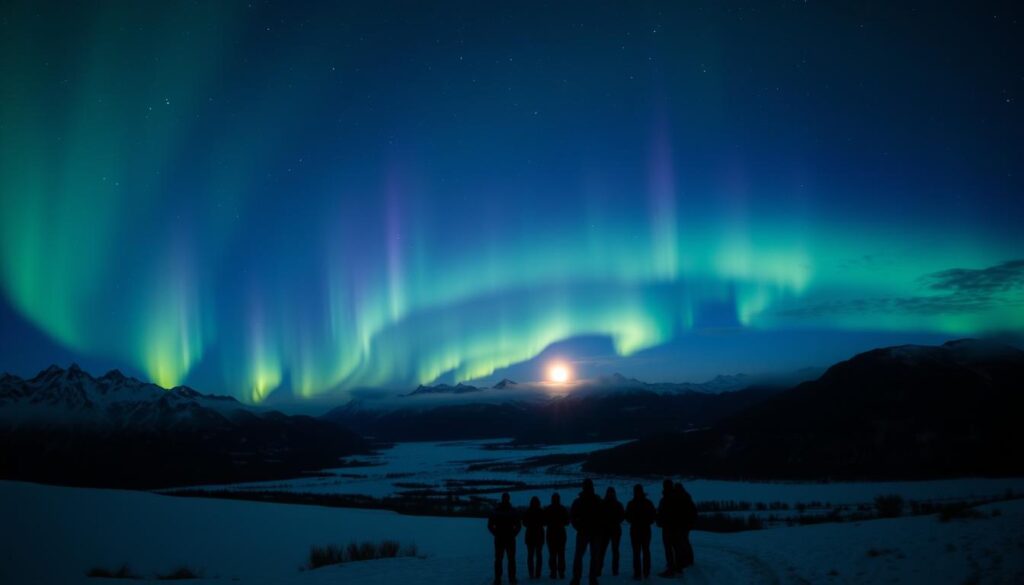
Prime Locations for Aurora Viewing
Tromsø, Norway, leads with 87% visibility odds. Compare it to Canada’s Yellowknife, where frozen lakes double as mirrors for the *celestial dance*. Finnish Lapland’s glass igloos blend comfort with front-row seats.
Best Times to Visit
The year 2025 peaks with solar activity, boosting aurora frequency. Aim for September–March when nights are longest. ABTA reports 20% of UK travelers now plan trips around this window.
Tips for Capturing the Lights
- Manual camera settings: Use ISO 1600+ and 15-second exposures.
- Preserve night vision with red-light headlamps.
- Land vs. cruise: Hurtigruten’s observatory ships avoid light pollution.
For a wild twist, Norway’s wolf-territory camps offer unfiltered views. Pack warm layers—and let your eyes adjust to nature’s greatest show.
Nighttime Wildlife Adventures
The wilderness comes alive when the sun sets, revealing creatures rarely seen by day. Over 70% of African mammals are nocturnal, from aardwolves to pangolins. This after-dark world offers adventures far beyond typical safari jeep rides.
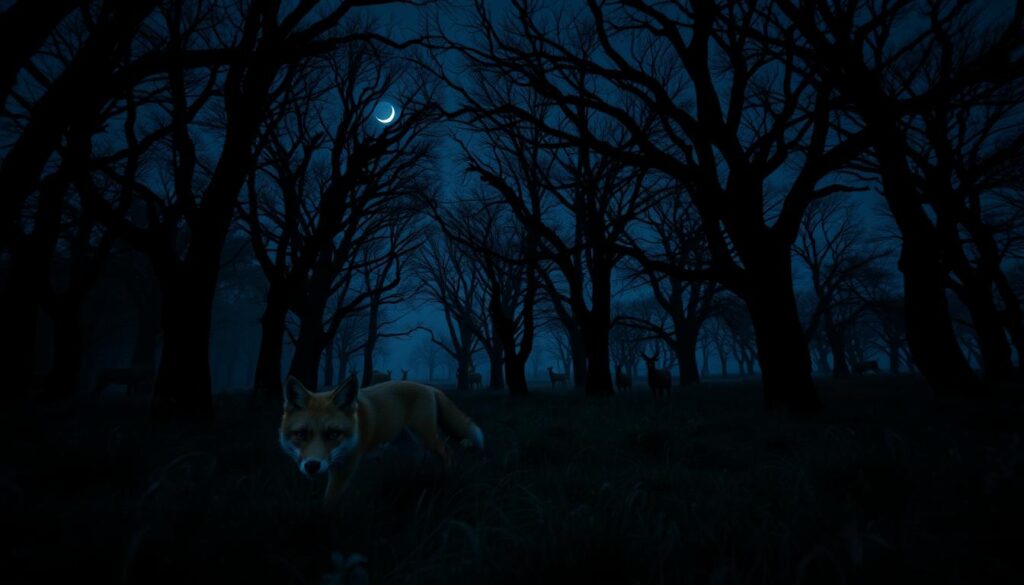
African Night Safaris
South Africa’s aardvark tracking contrasts with Madagascar’s lemur walks. Guides use red lights to spot wildlife without disruption. Luxury lodges like &Beyond’s Phinda reserve pair gourmet dinners with leopard sightings.
Rainforest Nocturnal Walks
Ecuador’s Sacha Lodge leads caiman-spotting canoe trips in the Amazon. Meanwhile, Costa Rica’s rainforest hikes reveal glass frogs glowing like emeralds. Ethical tours cap groups at six to protect habitats.
Unique Nocturnal Species to Spot
- Borneo’s western tarsier: Tiny primates with giant eyes, best seen on guided night treks.
- Patagonia’s pumas: Contiki’s tracking trips blend thrill with conservation.
- Europe’s brown bears: Overnight hides in Romania with Travelling Naturalist.
Pro tip: Choose operators using red lights and small groups. These animals thrive when tourism respects their rhythms.
Urban Noctourism Experiences
Cities transform into dazzling playgrounds after sunset, offering experiences daylight can’t match. From food stalls glowing under lanterns to monuments bathed in lights, nighttime urban landscapes pulse with energy. Tokyo reports a 30% spike in midnight temple visits—proof that adventure doesn’t stop when the sun sets.
After-Dark City Tours
Senso-ji Temple’s midnight tours reveal hidden details invisible by day. Contrast this with Petra’s candlelit Treasury or the Taj Mahal’s moonlight viewings—each offers a fresh perspective on iconic parks.
Night Markets and Food Scenes
Seoul’s Gwangjang Market buzzes with sizzling pancakes and silk lanterns after dark. Meanwhile, Marrakech’s Jemaa el-Fnaa square turns into a food carnival, where smoke from grills mingles with storytellers’ tales.
Architectural Illuminations
Kyoto blends tradition with tech, projecting cherry blossoms onto ancient temples. For modern marvels, Sydney’s Opera House and Dubai’s Burj Khalifa become light sculptures after sunset.
| Daytime Urban Activities | Nighttime Urban Adventures |
|---|---|
| Crowded museums | Private light shows |
| Standard food hours | 24-hour gourmet stalls |
| Rush-hour transit | Empty metro cars (London/Singapore) |
Pro tip: Safety-enhanced night metros make hopping between tours effortless. Ready to see cities in a new light?
Night-Sky Accommodations
Sleeping under a blanket of stars transforms travel into pure magic. Today’s lodgings blend luxury with nature, offering front-row seats to the cosmos. Whether it’s a safari star bed or a high-tech dome, these stays turn the night into a destination.
Star Beds and Open-Air Lodges
Kenya’s Basecamp Samburu pairs private hot tubs with handcrafted beds under desert skies. For barefoot luxury, the Maldives’ Milaidhoo arranges sandbank sleepouts with champagne under the Milky Way. These places evolved from basic bedrolls to climate-controlled sanctuaries.
Luxury Sleep-Outs Under the Stars
Compare Swiss haycart stays to NamibRand’s astronomy suites with private telescopes. Some resorts now offer meteor shower alerts via app—even telescopic room service. Jordan’s Wadi Rum takes it further with Martian-style tents and Bedouin stargazing guides.
- Sustainability: Dark Sky-certified resorts minimize light pollution.
- Tech meets tradition: Nomadic camps use ancient navigation alongside Wi-Fi.
Plan your trip around 2025’s solar events for an unforgettable year of celestial wonders.
Night Dives and Bioluminescent Wonders
The sea reveals its most magical secrets after sunset. From glowing plankton to fluorescent coral, nighttime waters offer adventures straight out of a dream. These light shows aren’t just beautiful—they’re scientific marvels.
Glow-in-the-Dark Marine Life
Bioluminescence (light from living organisms) differs from biofluorescence (absorbed light re-emitted as color). Tiny dinoflagellates in Puerto Rico’s Mosquito Bay create a Guinness-record glow. Meanwhile, Hawaii’s manta rays somersault through beams like underwater ballerinas.
Top Spots for Night Diving
Compare these iconic sites:
- Bonaire: Fluoro dives with UV torches reveal neon coral.
- Philippines: Apo Island’s corals pulse like disco lights.
- Vietnam: Halong Bay’s hidden lagoons glow emerald green.
For safety, always dive with certified guides. Use red-light filters to protect your eyes and avoid startling marine life. Pro tip: A DSLR with fast lenses captures the best content.
Japan’s Blue Cave in Okinawa offers a surreal mix of bioluminescence and crystal waters. Whether you’re snorkeling or scuba-certified, these island escapes redefine night exploration.
Astronomical Events in 2025
Celestial events in 2025 will rewrite nighttime travel bucket lists. With the sun reaching its solar maximum, expect brighter auroras, intense meteor showers, and rare eclipses. This year is your front-row ticket to the cosmos.
Meteor Showers to Watch
The Perseids peak on August 12, with up to 100 shooting stars per hour. Canary Islands offer unobstructed views of the Milky Way during this time. For a cultural twist, pair it with Thailand’s Loy Krathong festival (November’s full moon).
Total Lunar Eclipses
On March 14, a blood moon will glow red over the Americas. Eclipse-chasing tours in Chile include astronomer guides and telescopes. Pro tip: Book early—hotels near prime viewing spots sell out fast.
Solar Activity Peaks
2025’s solar maximum means stronger Northern Lights and radio disruptions. September’s planetary alignment (Jupiter-Saturn-Mars) is a photographer’s dream. Check these events off your list:
- April 8: Total solar eclipse across the Pacific.
- October 17: Orionids meteor shower peaks.
- December 4: New moon for darkest stargazing.
From Iceland’s aurora lodges to Namibia’s desert observatories, 2025’s sky demands your attention. Ready to chase the stars?
Essential Gear for Noctourism
The right gear turns nighttime adventures into unforgettable moments. Whether you’re tracking constellations or spotting elusive wildlife, these tools ensure comfort, safety, and epic views.
Stargazing Equipment
Entry-level telescopes like Celestron’s AstroMaster suit beginners, while pros opt for computerized models with GPS. Pair them with a red-light flashlight (Royal Astronomical Society-approved) to preserve night vision.
- Budget vs. pro: $200 refractors show lunar craters; $1,500 Schmidt-Cassegrains reveal Saturn’s rings.
- Accessories: Star chart scarves double as navigation aids.
Clothing and Comfort Items
Arctic trips demand heated insoles and portable saunas. For deserts, moisture-wicking layers combat chilly nights. Key picks:
- Thermal camera attachments: Spot wildlife without disturbing them.
- Power banks: Anker’s cold-weather models keep devices alive at -4°F.
Apps and Tools for Night Exploration
PhotoPills plans Milky Way shots, while Star Walk 2 identifies constellations in real time. At home, use Light Pollution Map to scout dark-sky sites.
| Tool | Best For |
|---|---|
| Night Sky | Augmented reality star tracking |
| Gaia GPS | Offline trail maps |
Pro tip: Download offline maps—remote areas often lack signal.
Planning Your Noctourism Trip
Smart planning unlocks the full magic of nighttime adventures. Unlike daytime travel, after-dark excursions demand attention to seasons, local expertise, and safety. Here’s how to design a seamless journey under the stars.
Best Seasons for Night Activities
Timing is everything. Aurora hunters should target September–March in Norway, while bioluminescent bays glow brightest in summer. The year 2025’s solar maximum boosts Northern Lights visibility—book early for prime time slots.
- Moon phases matter: New moons enhance stargazing; full moons illuminate wildlife hikes.
- High-altitude destinations like Chile’s Atacama require acclimatization days.
Booking Nighttime Tours
Not all operators are equal. Look for DarkSky International or PADI certifications for astronomy and diving tours. Aurora Zone’s latitude-based itineraries ensure 90% success rates. Pro tip: Reserve 6+ months ahead for celestial events.
Safety Tips for After-Dark Adventures
Night travel thrives on prep. Intrepid’s protocols recommend buddy systems in markets and red light headlamps for wildlife tours. Always share emergency contacts for remote places like Namibia’s dunes.
- Insurance check: Verify coverage for night activities (e.g., scuba, safaris).
- Pack a GPS beacon for off-grid stargazing spots.
Conclusion
Nighttime travel blends adventure with conservation, revealing a world few see by day. From bioluminescent bays to rare wildlife encounters, these experiences redefine exploration.
2025’s solar maximum makes it the perfect year to chase celestial wonders. Combine stargazing with urban night markets or safaris for a richer trip. Just remember—respect dark skies and nocturnal habitats.
Ready to dive into the dark? Book now before peak seasons fill up. The night awaits.
